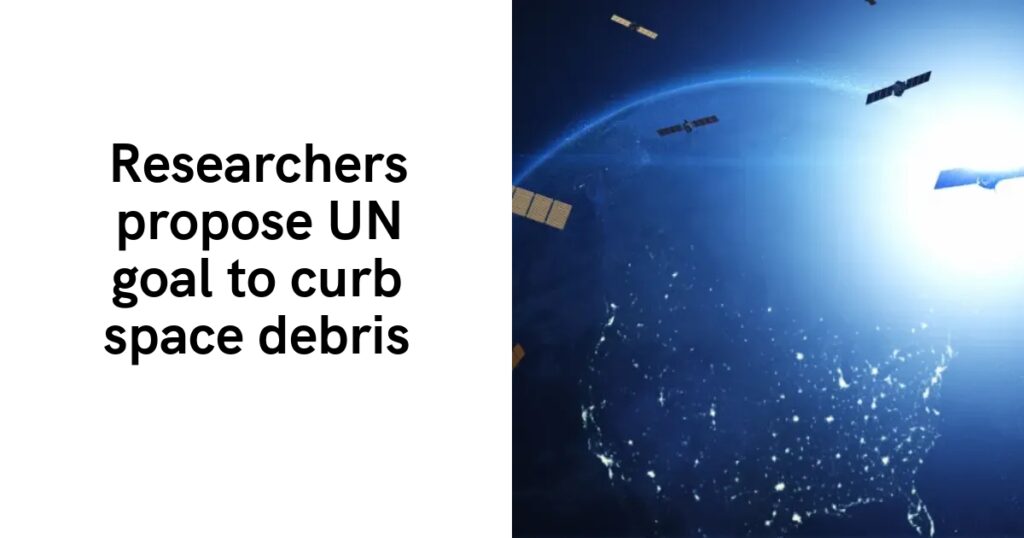TAMPA, Fla. — Countries must unite to include space stewardship in the United Nations’ sustainable development goals to address an escalating threat of orbital debris, an international group of scientists and other experts warned Jan. 9.
The group, including researchers from universities and NASA, said adding space sustainability to the 17 Sustainable Development Goals (SDGs) the UN adopted in 2015 would provide a framework for mitigating orbital debris while fostering global collaboration and accountability.
Existing SDGs range from ending poverty and hunger to combating climate change and protecting biodiversity. Most SDGs have targets for 2030; however, progress has been uneven, with nearly half showing minimal or moderate advancement, according to the UN, amid challenges such as COVID-19, geopolitical tensions, and climate disasters.
Still, with over 100 nations now involved in space activities and nearly 20,000 satellites launched since the 1950s, the group emphasized the need for urgent action to prevent irreparable harm to this vital environment.
Earth’s orbit currently supports $469 billion of human activity annually, the group noted in a report published in the journal One Earth, underpinning critical services like navigation, communications, and ecosystem monitoring. The rapid increase in satellite deployments raises the risk of cascading collisions, known as the Kessler Syndrome, which could render entire orbital regions unusable.
Co-author Melissa Quinn, general manager of international business at California-based space tracking and analytics company Slingshot Aerospace, said its data showed a 17% year-over-year increase in 2024 in the average number of close approaches per satellite in low Earth orbit.
A total 2,877 satellites were launched in 2023, according to Slingshot, up 15% from the previous year. Of the more than 12,500 spacecraft currently in orbit — of which over half are part of the Starlink broadband constellation, Quinn said around 3,300 are inactive.
From Ocean to orbit
The group’s report suggested drawing inspiration from the UN’s 14th SDG, Life Below Water, which sets a precedent for addressing global environmental issues that transcend national borders.
“Lessons from managing marine debris — such as implementing global treaties, fostering international cooperation, and encouraging technological innovation — can be directly applied to space debris,” Quinn told SpaceNews via email.
She pointed to the use of a waste hierarchy for marine plastics as an example, which prioritizes preventing debris generation over reactive measures like removal.
Similarly, the report advocates adopting a waste hierarchy for space, emphasizing strategies such as promoting reusability, recycling, and international cooperation to mitigate risks in orbit.
“Key to achieving sustainability is treating Earth’s orbit as a finite global commons, much like the ocean,” the report notes.
SDG14 also highlights “the importance of linking ecological sustainability with economic and social benefits,” Quinn added, “a principle that would be equally relevant for a space-focused SDG.”
She noted SDG14 incorporates penalties for illegal fishing under international agreements. Like other SDGs, its enforcement mechanisms often rely on diplomatic pressure, public accountability, and economic incentives.
Other co-authors included researchers from the University of Plymouth, the University of Auckland, NASA’s Jet Propulsion Laboratory, and the Zoological Society of London.
Many of the same scientists penned an article published in the Science journal last year calling for a legally binding treaty to safeguard Earth’s orbit. While progress toward such a treaty is ongoing, Quinn said geopolitical challenges and competing national interests have slowed efforts to establish unified and enforceable measures to address orbital debris.
Initiating an 18th SDG begins with advocacy by countries, followed by a formal introduction at the UN. The process involves building consensus among member states and aligning with existing SDGs, which emphasize the role of space technology in addressing global challenges, such as disaster response and climate monitoring, but do not address risks posed by the rapid expansion of orbital activities.


